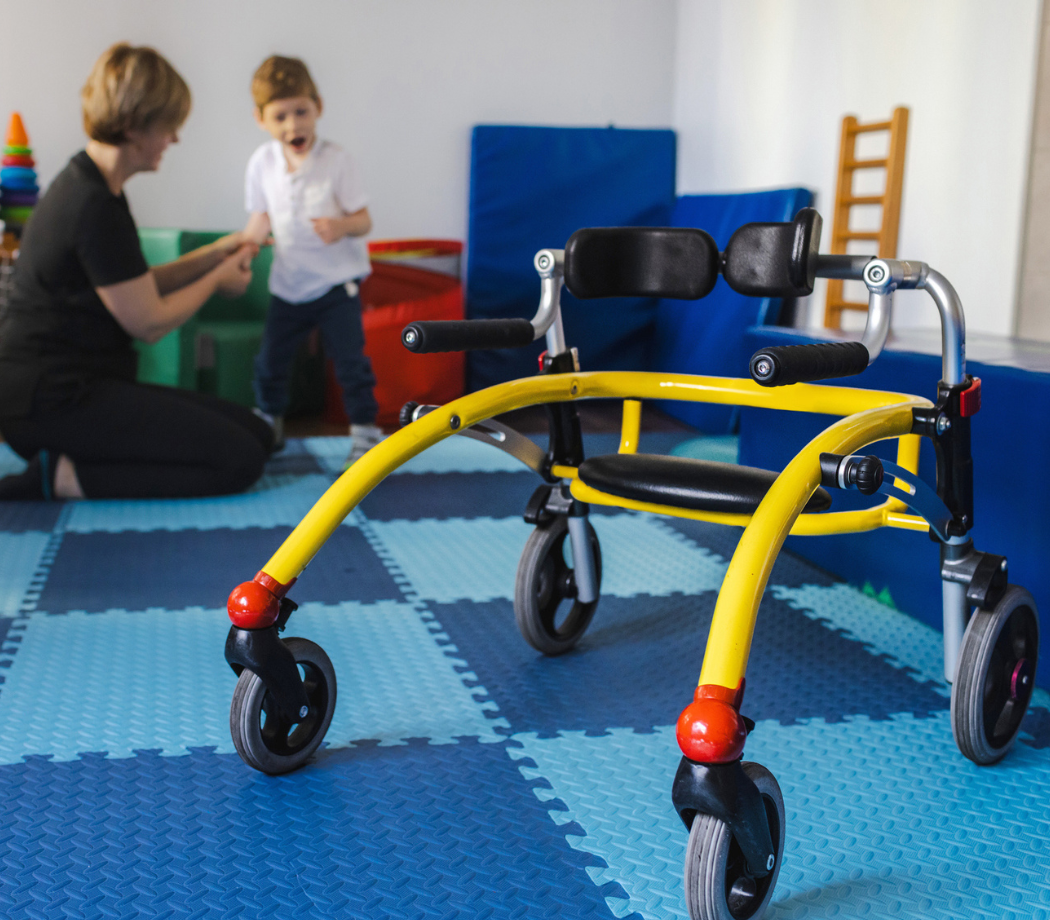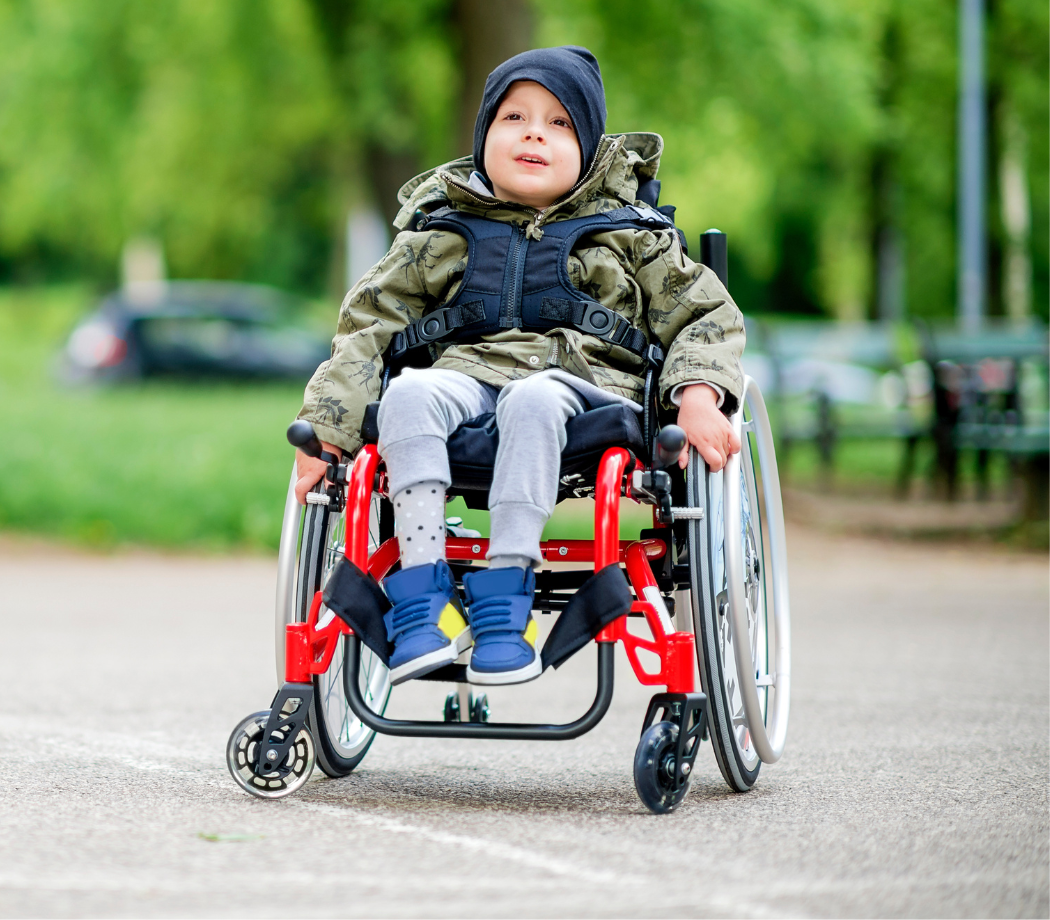Pediatric Trunk Control: SATCo Instrument, Professional Edition
Assessing head and trunk control is always a concern in physical rehabilitation. The Segmental Assessment of Trunk Control Outcomes (SATCo) assessment instrument was created to assess head and trunk control in infants and children with motor issues at the segmental level versus the traditional assessment of the total spine as one unit.
The advantages to trunk control are great. The ability to look out at the world instead of a droopy head is important to learning and interactions. Posture assists with breathing and organ functions in the gut. It allows the shoulder joints to move freely. There is some evidence that posture can assist with delay of muscle imbalances in the back.
Developmental stages are important in the pediatric population for example one of the first gross developmental skills in infants is head control, followed by later developments in trunk control for sitting balance and arm functions such as reaching. Assessing the ability of each segment of the spine is an approach to improving outcomes. Supporting therapies that are designed to assist with developmental steps can assist children to achieve their developmental goals.
How the SATCo is Administered
The SATCo can be performed in clinical, home, or school settings. The age range for use of SATCo is from four months to 12 years although it has been used with individuals up to 22 years. It is a physical assessment instrument that requires two individuals to complete the assessment. One adult supports the child’s trunk while the other adult tester monitors posture and performs the movement or challenges to the child. Education of the testing adults can be completed by classroom education or video.
Segments of the spine that are manually supported follow the pattern of shoulders for head support assessment (C7 and above), axillae for upper thoracic body (T1-T3), inferior scapula for mid thoracic (T3-T7), lower ribs for lower thoracic (T7-T11), below the ribs for upper lumbar (T12-L3), and pelvis for lower lumbar (L4-S5). Note: there are overlapping anatomical levels in this assessment.
The test is then scored on three functions. Scoring is either present or not present, there is no grading of ability. Static control is the ability to maintain posture for three seconds. Active or anticipatory control is the ability to hold a neutral posture while challenged by turning the head 45 degrees or right and left reaching. Reactive control is the ability to return to neutral after a physical challenge. There are no totals, just responses at each level. An area on the score sheet is available for comments. Videos of the assessment assist with future comparisons and education of those caring for the child.
A good description of the assessment process and score sheet is available at these sites (note: these are not endorsement of products, only for information):
- Video: Penny Butler SATCo Interview
- PDF: SATCo clinical workbook from Leckey
- Video: An Introduction to SATCo (Segmental Assessment of Trunk Control)
Reliability and Validity of the SATCo
Studies of reliability and validity of assessment instruments typically begin with individuals with typical development (TD) and are then expanded into various diagnostic categories. An instrument is not valid unless testing has been completed for reliability and validity in that population.
The SATCo has be tested for reliability and validity in TD and in children with motor issues. Some studies are highlighted below.
A study assessed reliability and validity of the instrument in twenty infants, full and preterm, without motor issues, from four to nine months, corrected. The instrument was reliable (ICC ≥ 0.75), however, infants at five to six months were likely to use some hand support if already sitting. Changes in outcomes was noted as the infants developed. Differentiation between pre-term and full term in reactive trunk control was not made until eight months (Pin, et al., 2018).
A combination study of 8 infants TD and 24 children with neuromotor issues was completed following each child over time. The results for ICC values for inter rater and intra rater reliability were >0.84 and >0.98. Validity was compared to the Alverta Infant Motor Scales with coefficients of 0.86 to 0.88 (Butler, et al, 2010).
In children 9 months to 16 years with cerebral palsy, no differences were found with live versus recorded assessment ratings (ICC ≥ 0.9). Score agreement was demonstrated in 75% of reviews, one segment difference was 22% and more than one segment difference was 3% (Hanson, et al., 2018).
Other diagnostic categories have assessments of reliability and validity of SATCo including spinal cord injury. Sensitivity of the instrument was assessed in children with SCI over time to evaluate progress in activity-based therapy. Improvement was noted from initial score, at differing injury levels and not dependent on length of time since injury after three months of therapy (Argetsinger, et al., 2019). Other diagnoses include muscular dystrophy including Duchenne, cerebral palsy, and other motor issues.
Incorporating Results Into Function
Once areas of function are understood, therapy can be added to improve function by level. This can allow for specific levels of the body to be improved through therapy, blocking and positioning. Once the specific levels of function are identified, the positioning strategies can be incorporated into sitting, walking, exercise, play, school, and activities of daily living. Strategies for positioning should be carried out throughout the day of the child to include postural stability and gross motor control. Successes can be readily seen which encourages the child as well as the parents or caregivers.
Approaches that can be used include positioning equipment in seating, trunk, and head support as needed. Therapy to strengthen musculature may include exercises, activity-based therapy, or electrical stimulation as appropriate for the individual. Aquatic therapy and hippotherapy are also beneficial. Follow through at home and at school is imperative.
Written by Linda M. Schultz, PhD, CRRN
References and Further Reading
Argetsinger LC, Trimble SA, Roberts MT, Thompson JE, Ugiliweneza B, Behrman AL. Sensitivity to Change and Responsiveness of the Segmental Assessment of Trunk Control (SATCo) in Children with Spinal Cord Injury. Developmental Neurorehabilitation 2019; 22:4, 260-271, DOI: 10.1080/17518423.2018.1475429
Butler PB, Saavedra S, Sofranac M, Jarvis SE, Woollacott MH. Refinement, Reliability, and Validity of the Segmental Assessment of Trunk Control. Pediatr Phys Ther. 2010;22(3):246-257. doi:10.1097/PEP.0b013e3181e69490
Hansen L, Erhardsen KT, Bencke J, Magnusson SP, Curtis DJ. The Reliability of the Segmental Assessment of Trunk Control (SATCo) in Children with Cerebral Palsy. Phys Occup Ther Pediatr. 2018 Aug;38(3):291-304. doi: 10.1080/01942638.2017.1337662. Epub 2017 Jul 27. PMID: 28749721.
Kott K, Held S. Refinement, Reliability, and Validity of the Segmental Assessment of Trunk Control. Pediatr Phys Ther. 2010 Fall;22(3):258. doi: 10.1097/PEP.0b013e3181eb6561. PMID: 20699771.
Pin TW, Butler PB, Cheung HM, Shum SL. Segmental Assessment of Trunk Control in Infants from 4 to 9 Months of Age–A Psychometric Study. BMC Pediatr. 2018;18(1):182. Published 2018 May 31. doi:10.1186/s12887-018-1153-4.
Sánchez MB, Loram I, Holmes P, Darby J, Butler PB. Working Towards an Objective Segmental Assessment of Trunk Control in Children with Cerebral Palsy. Gait Posture. 2018 Sep;65:45-50. doi: 10.1016/j.gaitpost.2018.06.176. Epub 2018 Jun 30. PMID: 30558945.
Singh G, Aslan S, Ugiliweneza B, Behrman A. Contribution of Trunk Muscles to Upright Sitting with Segmental Support in Children with Spinal Cord Injury. Children (Basel). 2020 Dec 8;7(12):278. doi: 10.3390/children7120278. PMID: 33302402; PMCID: PMC7762575.





